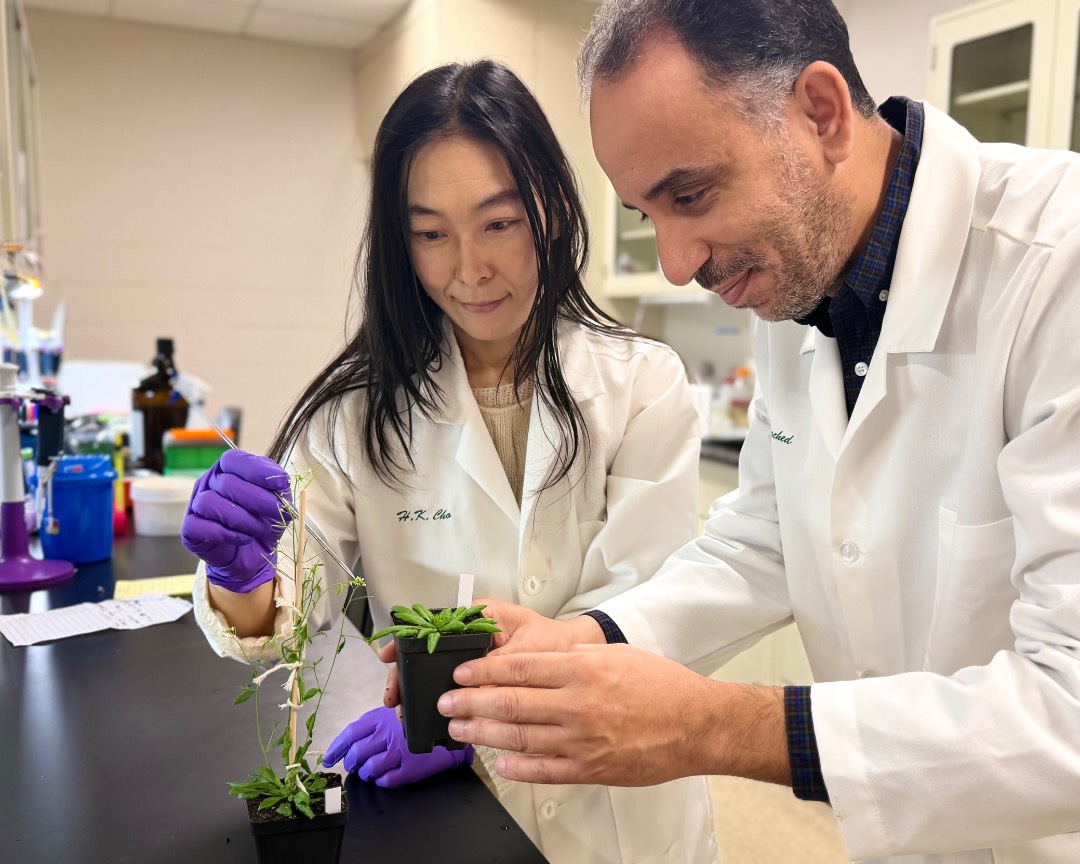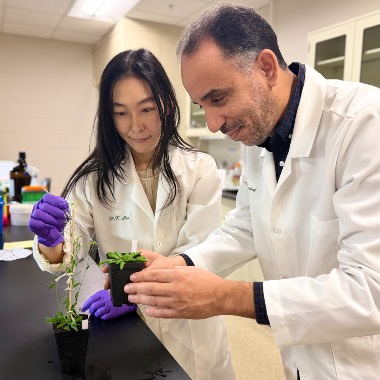How plants decide when to flower: MSU scientists uncover a phosphorus-responsive switch
A newly discovered signaling pathway explains how plants delay flowering when phosphorus runs low, opening doors to nutrient-efficient crops.
Article Highlights
- Phosphorus is essential for global food production, yet it comes from limited, nonrenewable sources. Understanding how plants naturally adapt to phosphorus scarcity could help create crops that thrive with less fertilizer.
- MSU scientists uncovered, for the first time, how changes in a plant’s nutrient status can physically move proteins inside its cells to control when it flowers.
- The discovery provides a blueprint for breeding nutrient-efficient, resilient crops that maintain yields in poor soils while reducing fertilizer dependence and environmental impact.
Phosphorus, a key ingredient in fertilizers, is running out. The world’s food systems depend on phosphorus mined from limited reserves, yet much of what is applied to fields washes away, leaving soils increasingly depleted. As phosphorus becomes scarcer, crops struggle to grow and reproduce, threatening yields and global food security.
But while humans search for ways to use phosphorus more efficiently, plants have been managing this challenge for millions of years. When phosphorus runs low, they adjust their growth, slow their flowering, and wait for better conditions. Until now, the method plants use to make this developmental shift was a mystery to scientists.

Researchers at Michigan State University’s Plant Resilience Institute have uncovered the molecular mechanism that allows plants to sense phosphorus deficiency and delay flowering, a survival strategy that could inspire new ways to breed crops for low-fertility soils. The manuscript, published in Developmental Cell, reveals a phosphorus-dependent “switch” inside plant cells that reprograms their development when nutrients are scarce.
“This is the first time we have seen such a direct link between nutrient status, protein movement inside the cell, and control of flowering time,” said Associate Professor Hatem Rouached, senior author and faculty member in MSU’s Department of Plant, Soil and Microbial Sciences. “This discovery helps explain how plants translate nutrient stress into developmental timing. By understanding that mechanism, we can begin designing crops that flower and yield optimally even in nutrient-poor environments.”
A Nutrient Signal Becomes a Developmental Decision
The research, led by Dr. Hui-Kyong Cho, a postdoctoral fellow in the Rouached lab, began with a simple observation: plants grown in phosphorus-poor conditions consistently flower later than those with sufficient phosphorus. Using genome-wide association mapping in Arabidopsis, Cho and her colleagues searched for the molecular basis that explains this phenomenon.
Their search led to an unexpected candidate; a protein called β-GLUCOSIDASE 25 (bGLU25). Although bGLU25 belongs to a family of enzymes that typically break down carbohydrates, the team found that it is catalytically inactive. Instead, it acts as a signal, relaying information about the plant’s nutrient environment.
Under phosphorus-rich conditions, the bGLU25 protein resides quietly in the endoplasmic reticulum, the cellular compartment that helps process proteins. When phosphorus runs low, bGLU25 is cut by another protein, SCPL50, and released into the cytosol, the cell’s fluid interior.
“That movement, from one compartment to another, is the plant’s way of flipping a molecular switch,” said Cho. “It changes what bGLU25 can interact with, and that changes how the plant decides when to flower.”

A Molecular Chain Reaction
Once in the cytosol, bGLU25 binds to another protein called AtJAC1, which then traps a third protein, GRP7, preventing it from entering the cell’s nucleus. GRP7 normally regulates a gene known as FLOWERING LOCUS C (FLC), a master repressor that keeps plants from flowering too soon.
By keeping GRP7 in the cytosol, bGLU25 indirectly boosts FLC activity, delaying flowering when phosphorus is scarce. The result is a finely tuned response: under low phosphorus, the plant invests in survival rather than reproduction.
“It is an elegant example of how plants integrate environmental signals into developmental choices,” Rouached said.
An Ancient Strategy with Modern Importance
Phosphorus is essential for plant metabolism. It forms part of DNA, membranes, and energy molecules such as ATP. But phosphorus-rich soils are rare, and phosphate fertilizer supplies depend on limited global reserves. Understanding how plants naturally cope with scarcity could help scientists breed nutrient-efficient crops that require less fertilizer while maintaining yields.
“This mechanism is not just an Arabidopsis curiosity,” said Rouached. “We have already seen evidence that a similar process operates in rice and other crop species. That opens exciting possibilities for improving agricultural resilience in phosphorus-deficient regions.”
By decoding how plants sense and respond to phosphorus stress, Rouached and Cho hope to lay the foundation for a new generation of “nutrient-smart” crops.
“If we can help plants make better decisions about when to flower and how to use their resources, we can help agriculture become more sustainable,” Rouached said. “This discovery gives us a blueprint for that future.”



